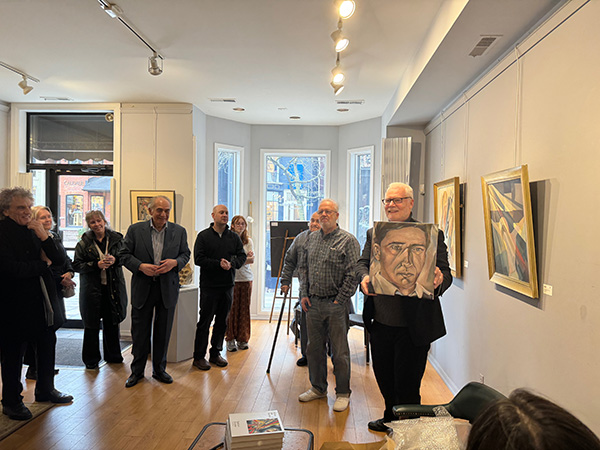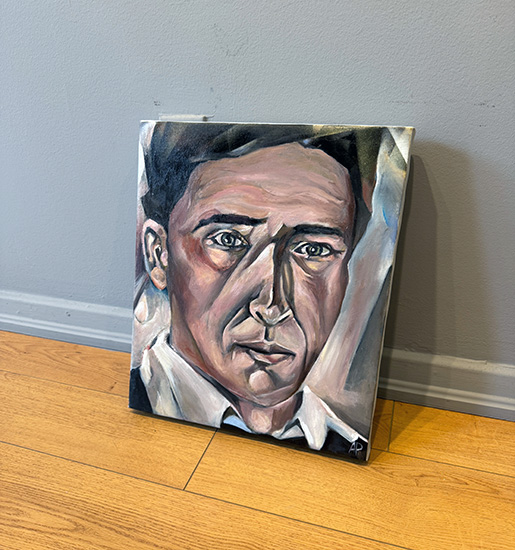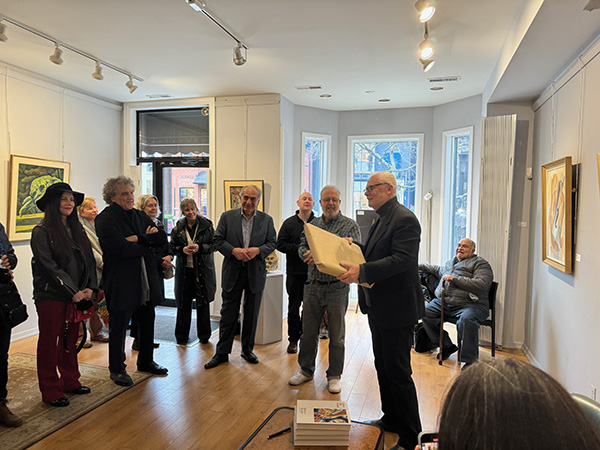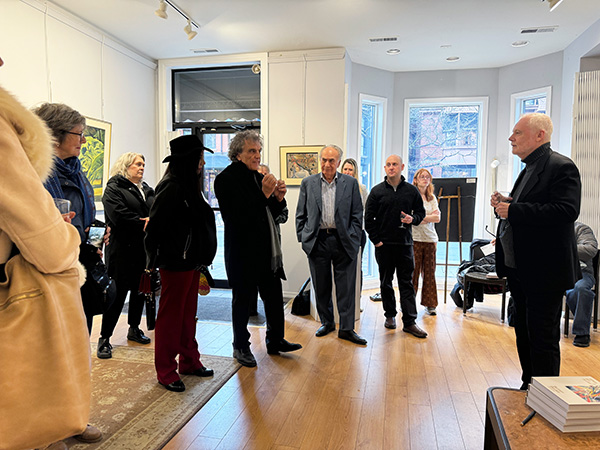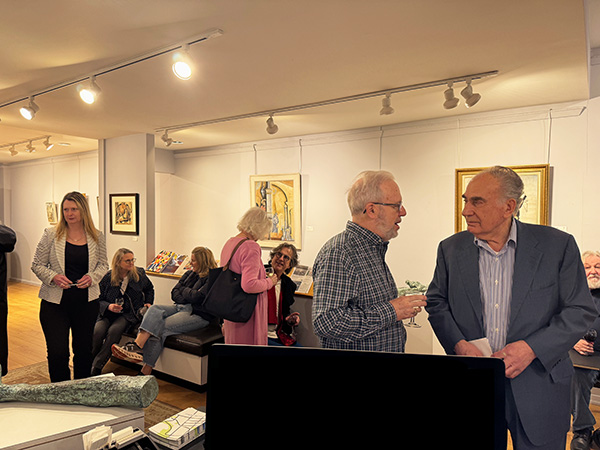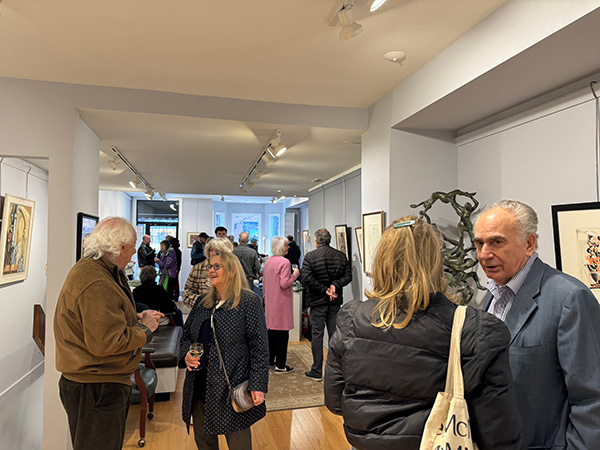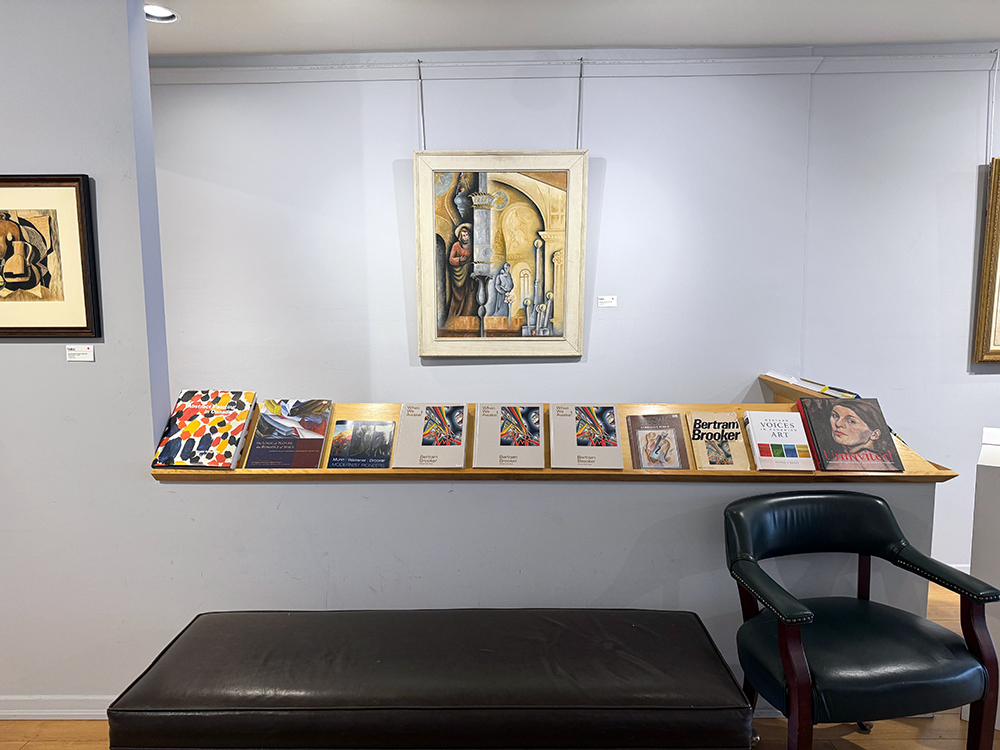Bertram Brooker (1888-1955)
VISIONARYSix years ago, I hosted an evening for patrons of the McMichael Canadian Art Collection at Gallery Gevik and the first artist I thought to display on that special occasional was Bertram Brooker since I consider him one of the most important and versatile artists Canada has ever produced. Recently, I was happy to learn that it was at this event that curator Michael Parke Taylor and McMichael Executive Director & Chief Curator Sarah Milroy were first inspired to mount a retrospective devoted to him.
As the years went by, despite occasional check-ins with Michael, I was starting to worry that the show wasn’t going to happen. When news came that Bertram Brooker: When We Awake was to debut at the McMichael in February of this year, I was very excited and upon finally seeing the show, I can see why it took so long to come to fruition. What Michael and Sarah have delivered is one of the most dazzling career retrospectives I’ve ever seen – the care and research that went into presenting each strand of Brooker’s incredible output, in a variety of media, is stunning to behold. There are artworks on display that many thought were missing and when seen together, one can only conclude that this visionary artist has finally gotten the respect, care and consideration he deserves.
In celebration of Michael and Sarah’s outstanding achievement, it is my pleasure to present Bertram Brooker: Visionary. Special thanks go to John Brooker, his sister Joan Porter and a handful of truly great supporters for generously lending their Brooker works to this mini-survey exhibition. I hope you can join us on April 20th, 2024 at 3pm to hear Michael speak briefly about the artist and sign copies of his outstanding monograph. — Phillip Gevik
Self-taught as an artist, Bertram Brooker left school at the age of twelve. He came with his family to Canada in 1905 and settled in Portage la Prairie, Manitoba, where he worked at several jobs and learned clerical skills at night school. In 1921, he moved to Toronto to work as a magazine editor, soon joining the Arts and Letters Club, where he met members of the Group of Seven. He began experimenting with oils, creating abstract shapes and forms, and by 1926 was painting seriously and working as a freelance journalist. The following year, he held his first solo exhibition of abstract works at the Arts and Letters Club, an exhibition that was praised by A.Y. Jackson, Arthur Lismer and David Milne. In 1928 Brooker’s paintings were exhibited together with works by the Group of Seven at the Art Gallery of Toronto (now the AGO). He was to be one of a few Canadian painters to have solo shows simultaneously at both the AGO and the National Gallery of Canada.
Music was important to Brooker and through his paintings, he successfully explored the relationship between melody and the abstract forms that sprung to life within the compositions of his paintings, creating an exciting and unique symbiosis of the two disciplines. He proudly referred to this series of works as “expressions of musical feelings.”
On a trip to Winnipeg in 1929, Brooker met and befriended LeMoine FitzGerald, whose figurative work immediately inspired him. He abruptly turned away from abstraction in favour of form and structure, moving to landscapes, realistic figure work, and later, still lifes. His 1931 nude painting Figures in Landscape caused an uproar at the Art Gallery of Toronto, which refused to hang it. A founding member of the Canadian Group of Painters, Brooker participated in the group’s first exhibition in 1933.
In addition to being a prodigiously talented painter, Bertram Brooker was also a gifted writer and in 1936, was the recipient of the first Governor General’s Award in fiction or his novel Think of the Earth. Throughout his lifetime he continued to produce more novels as well as numerous articles, film scripts, stories, poems and plays. When Brooker died suddenly on March 22, 1955, Canada lost a true creative force. The following year a major memorial exhibition of his paintings was held at the Art Gallery of Toronto, revealing the consummate degree to which Brooker’s inventiveness had succeeded in balancing the demands of commerce and the commands of the spirit.

